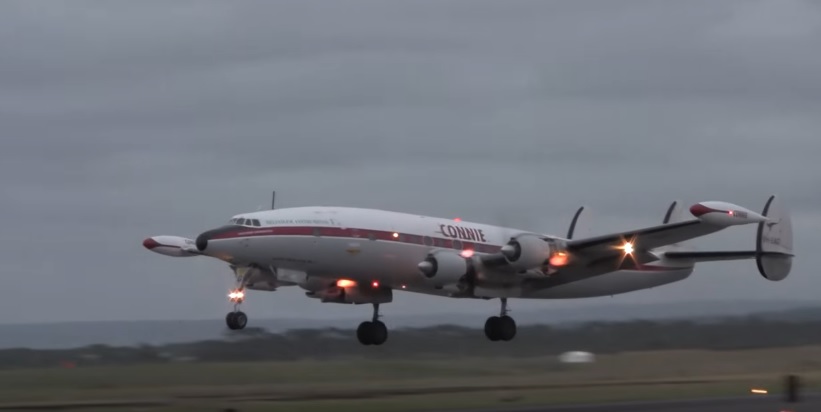Setting the engines to run rich, or with a high fuel-to-air ratio, produces this stunning image
The Lockheed Constellation, often known as “Connie” by her aircrews, was a four-engined propeller-driven airliner made in Burbank, California, by Lockheed Corporation between 1943 and 1958.
By 1951, the much-loved Model 1049 Super Constellation, which boasted previously unheard-of innovations like air conditioning, reclining seats, and more restrooms, had been launched and was arguably the most famous of the Lockheed Constellation aircraft line. It was a plane that was ahead of its time, using at least twice as little fuel as many of today’s sophisticated aircraft and at least twice as much as the earliest jets in the industry.
Her four 3,400 horsepower per engine Wright R-3350 twin-row, 18-cylinder radial engines also contributed to these amazing capabilities.
The following fascinating video shows a Qantas Lockheed L-1049G Super Constellation conducting a stunning takeoff with flames shooting out of her R-3350s during the 2011 Avalon Airshow.
It is noteworthy that this remarkable effect is produced by running the engines rich, or with a high fuel-to-air ratio. This slows down combustion and prevents detonation, allowing greater power settings (like methanol/water injection). This also implies that some gasoline cannot be burnt before the cylinder runs out of it (the unburned fuel absorbs and carried away some of the heat, which is how it cools the cylinder). It then burns when new oxygen is introduced to the exhaust stream.
The same aircraft is shown flying a midnight flyby in this additional video from the Avalon Airshow 2011; as you can see, the flames are much more visible than they were during the day.

